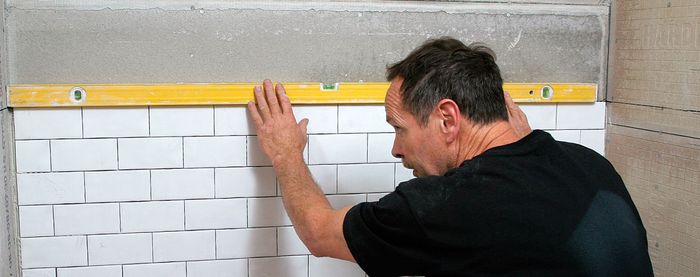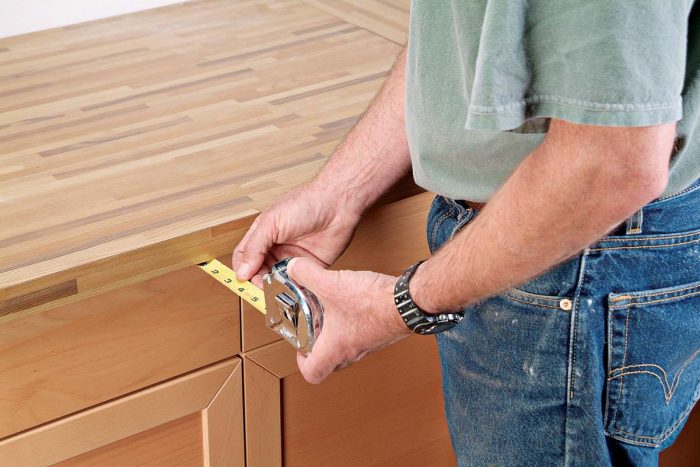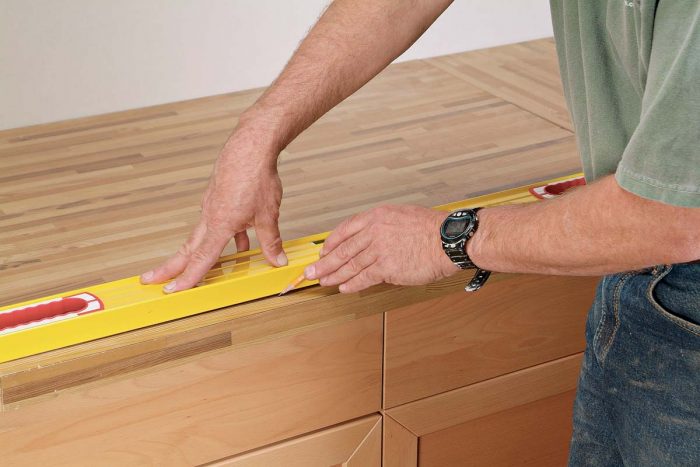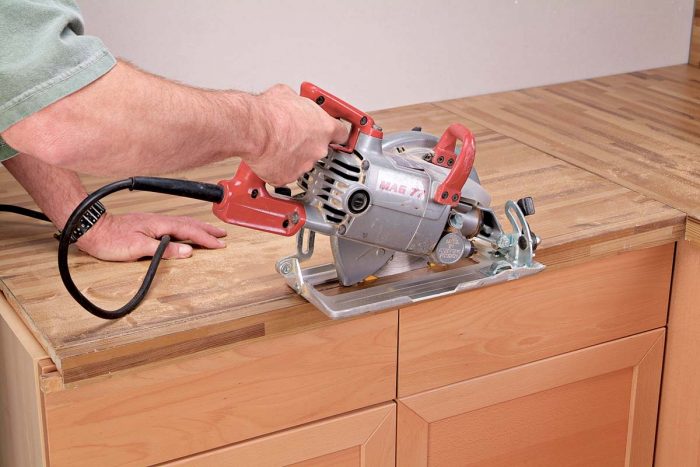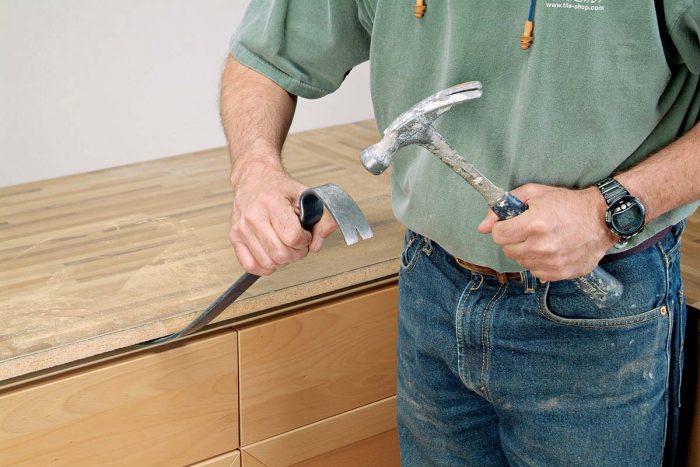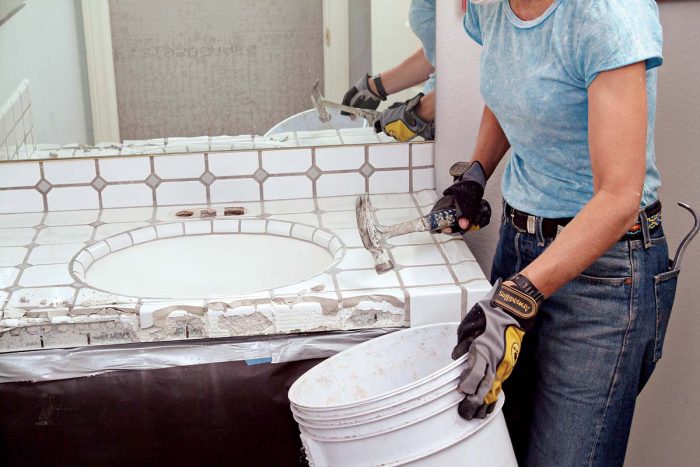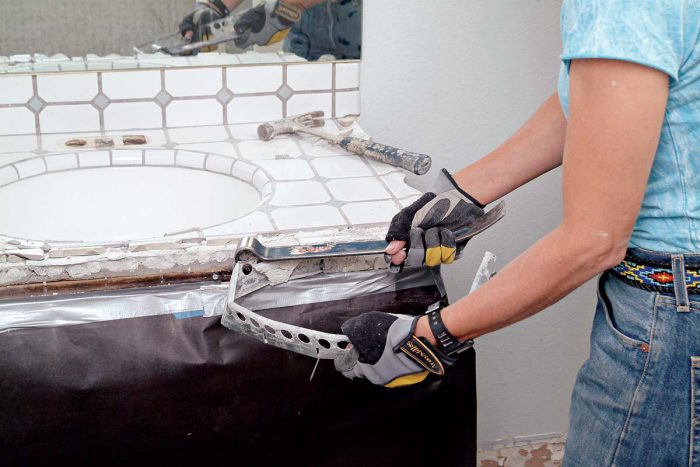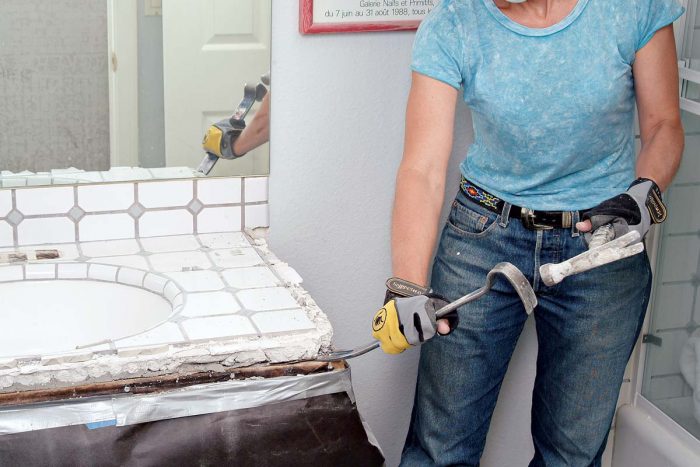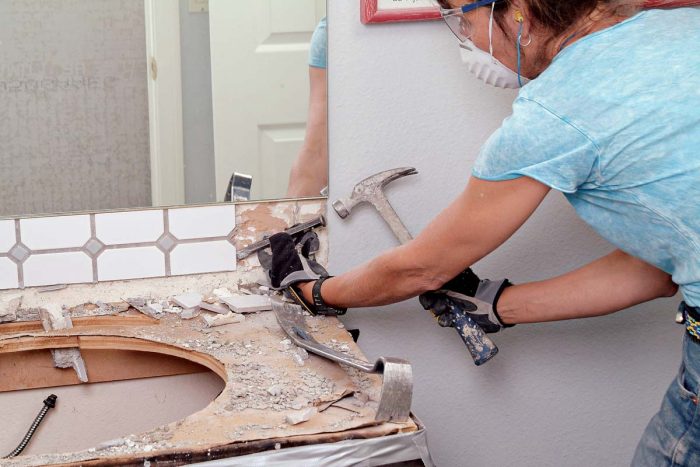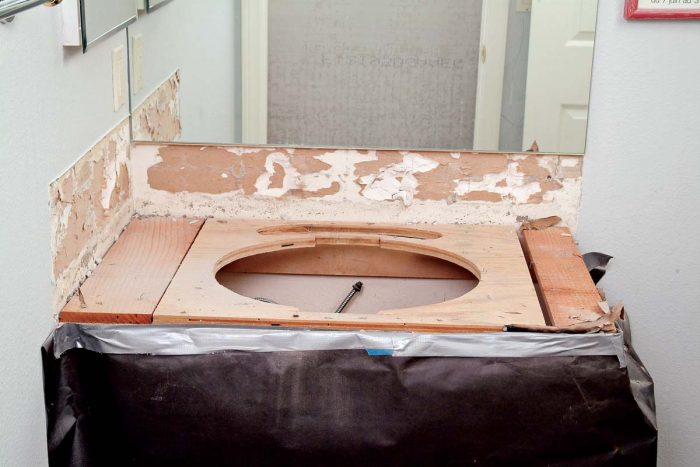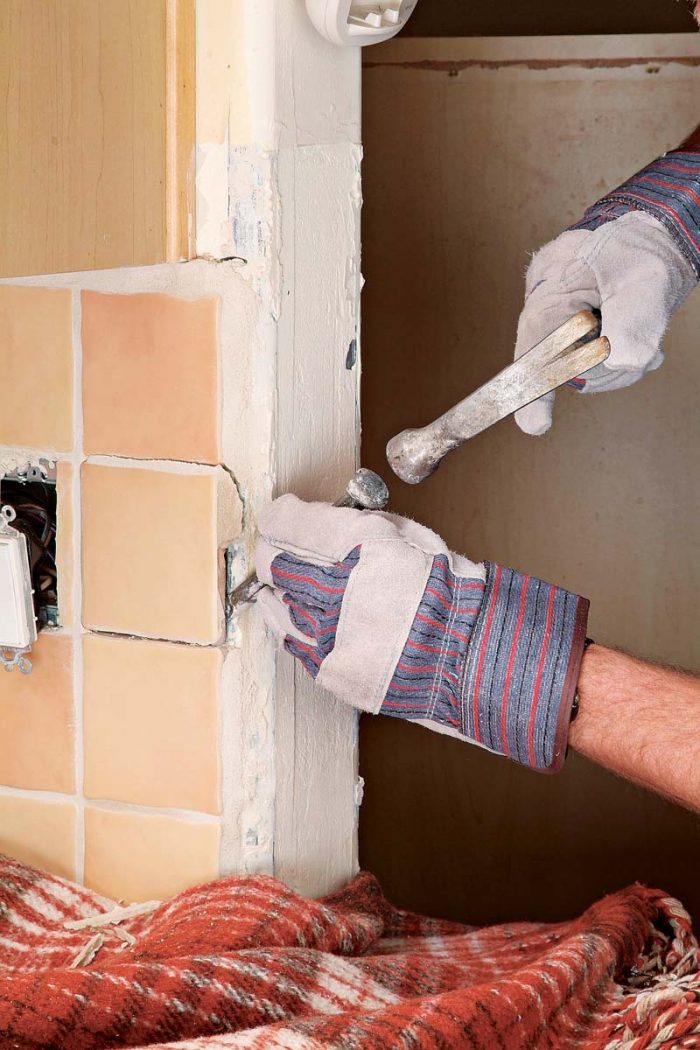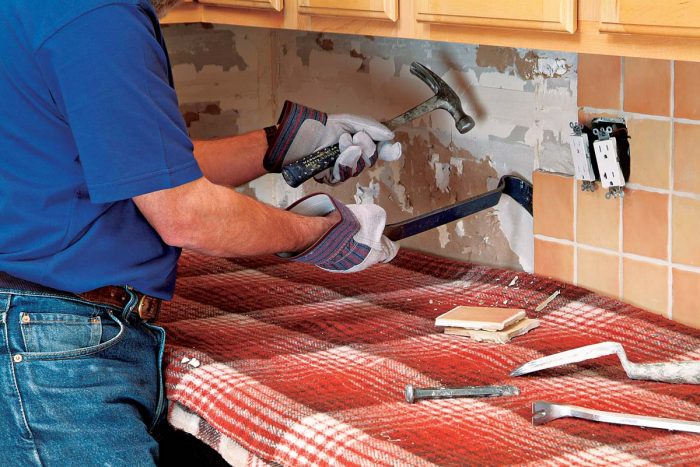Removing Old Countertops and Backsplashes
Prep counters and walls before creating the new tile surface.
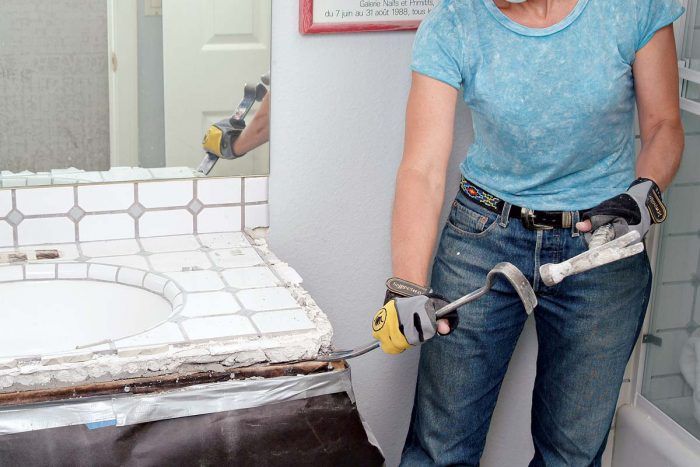
Whether you have old tile, plastic laminate, or some other kind of countertop, you should remove it before creating a new tile counter. If water damage is apparent or if the wood rough top under the countertop is out of level, it too should be removed. The time you take tearing out an old counter surface will be repaid with a flat, stable tile surface.
Removing Laminate-Covered Countertops
A laminate-covered countertop may seem like a smooth durable surface for setting tile. But in most cases, you’ll end up with a better tile job if you remove the countertop and attach a new plywood substrate to set your tile on. To remove your old laminate countertop without damaging your cabinets, first cut off the front edge of the laminate. To avoid cutting into the face of your cabinet, measure the overhang distance from the cabinet to the countertop’s edge 1 and subtract 1/8 in. from your measurement. Mark each end of the countertop at this distance 2, then use a level or straightedge to draw a line connecting the marks 3. Cut along this line with a circular saw (set to cut no deeper than 3/4 in.) to remove the countertop edge 4. Now you can pry off the countertop with your prybar and a hammer 5. Lift the laminate up at the corners or at the ends of the cabinet, above the cabinet base—don’t pry where the top is unsupported, or you may damage the cabinet.
What can go wrong
Particleboard is not a good substrate for tile work under any circumstances. If it gets wet from water seeping around a sink edge or a leak from a supply line underneath, it will swell up and lift your entire counter, including the tile.
Removing Tiled Mortar-Bed Countertops
Removing a tile countertop that’s been professionally set on a mud mortar bed is very dusty, dirty, and noisy work, so be sure to don safety gear, including a dust mask, safety glasses, and hearing protectors. Start by knocking off the tiled front edges with a hammer to expose the underlying mortar bed 1. If there’s a metal cap strip, pull it off with a prybar 2. To remove the mortar bed, drive the pry bar underneath it at a corner or at the cross-members of the cabinet, and lift 3. Lift the sink out (if there is one), then remove the counter’s backsplash by knocking the tiles off with a hammer and chisel 4. Sweep or vacuum up the dust and debris 5. Underneath the old tile and mortar, you’ll find a wood substrate or rough top of some kind—plywood, particleboard, or 2x6s. Check the condition of the rough top. If it’s out of level or has water damage, remove and replace it.
Removing Tile from a Backsplash
If you need to remove old tile from the backsplash, start by prying up any edge trim or edge tiles 1. Place your chisel between the grouted edge and the wall. If the tile is set directly to the wall, the tiles should come off easily when pried with a margin trowel 2. If the tile is over a mud bed, it’ll take more effort to remove the old backsplash. You can try using a prybar or hammer claw to get under the tiles and pry them off 3. To avoid punching holes in the wall surface, try to restrict heavy prying to areas where the wallboard is attached to studs.
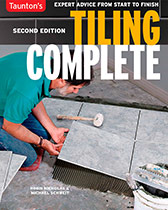 Excerpted from Tiling Complete, 2nd Edition by Robin Nicholas and Michael Schweit.
Excerpted from Tiling Complete, 2nd Edition by Robin Nicholas and Michael Schweit.
Available in the Taunton Store and at Amazon.com.
